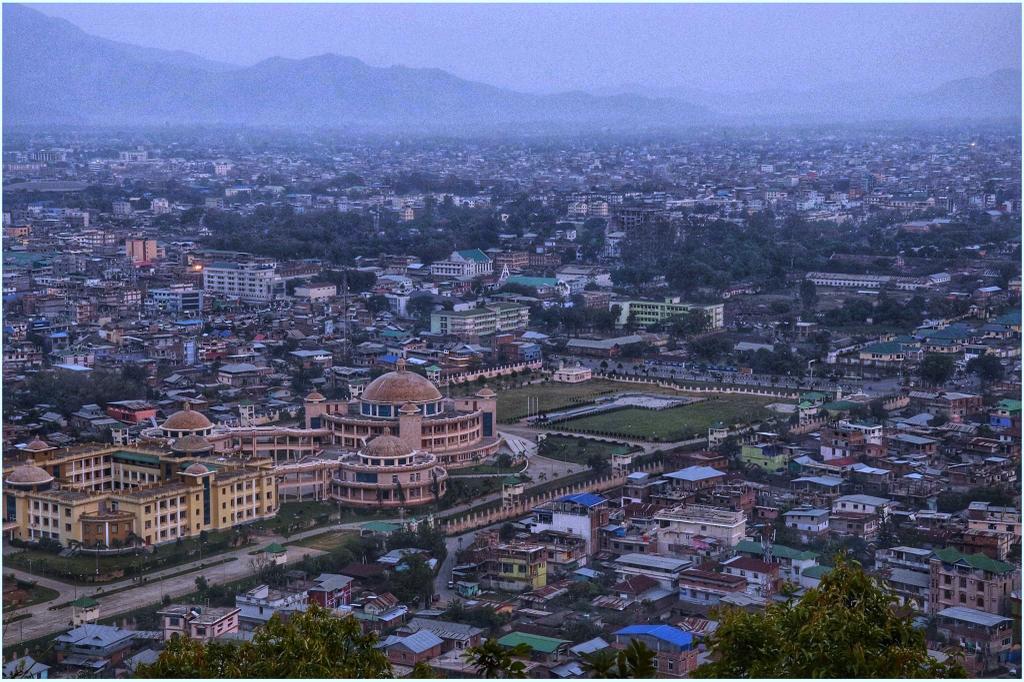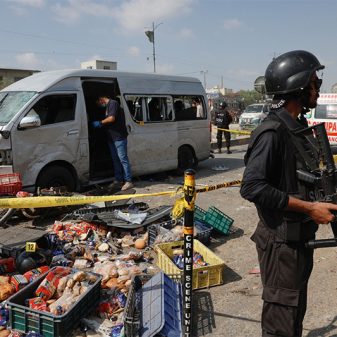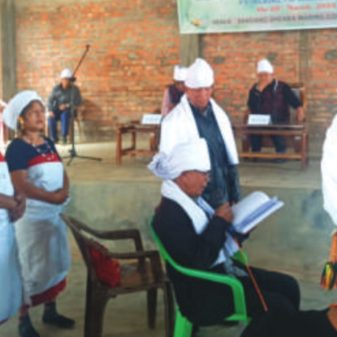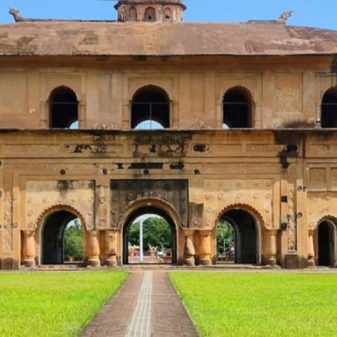
Agency: The latest round of violence that broke out as the new year started in the picturesque Northeastern state of Manipur seems to be markedly different from the cycle of hysterical mob clashes which had engulfed the ‘Jewel of the East’ in May last year.
The ethnic madness that marked the first phase of mayhem in Manipur has now degenerated into Wild West-style gunfights between armed groups drawn from the two embattled communities — Meiteis and Kuki-Zo tribes.
The first few months of violence had resulted in invisible ethnic borders being drawn up, with Kukis and other tribals from the larger Zo community exiting the Imphal valley which the Meiteis had always dominated; and in turn the Meiteis vacating the tribal-run hill districts for the safety of the valley, in what seemed like a replay of events which occurred in 1947 in the Punjab where there was widespread ethnic cleansing on religious lines.
The much-maligned Assam Rifles and the army regiments posted in Manipur created buffer zones between Meitei areas and those where Kukis and other tribals like the Paites lived and maintained an uneasy peace which at times was punctured by the occasional attempt by one community or the other to extend their area of dominance.
The myriad network of Kangleipak rebel factions that at one time had plagued the Imphal valley and which were more or less contained over the last two decades, seem to have revived, some armed with weapons “looted” from the state police force.
Some of the similarly faction-ridden Kuki militants in Manipur who had surrendered and had been living in camps under the watchful eyes of the Assam Rifles too may have slipped out and possibly joined armed village vigilantes in the hill district.
As the communal battle lines drawn in the state hardened, the factions on both sides of the ethnic divide coalesced into two broad “armies” of Kukis and Meiteis with a common enemy — each other.
A War Within A War
It almost seems that a “war within a war” has broken out in the state as groups attack each other and at the same time take advantage of the general breakdown of law and order to indulge in extortion, gun running and narcotics trading, which they had historically been involved in, and hold the general public at ransom.
The recent incident where Pangals, Manipur’s tiny Meitei Muslim community, were targeted by a Meitei militant group seems to be a fallout of just that.
Despite attempts to mend race relations with peace committees coming up, the fact remains that the presence of heavily armed militants and vigilantes on both sides has led to a sharp fall in the trust between communities and in the effectiveness of the state in either keeping the peace or in building trust.
The violence and the inadequacy of the state machinery in resolving the crisis has already claimed at least 180 lives and resulted in the burning down of 1,700 and displaced nearly 40,000 people, some of whom have sought refuge in other states.
An influx of Kukis from Myanmar, refugees to the conflict in that neighbouring nation, has also heightened the sense of insecurity among Meiteis.
Though the Kuki National Organisation and the Kuki National Army (Burma) have issued repeated statements emphasising that their sole fight was against the Myanmar state and they were not involved in any firefight in Manipur, the presence of some of their cadres acting in an independent manner in training village vigilantes cannot be ruled out.
Many analysts are also unhappy that the state government has been bolstering the presence of state police commandos, drawn almost entirely from among Meiteis, in the Kuki hill areas. Clashes between them and Kukis have been reported in Moreh as well as allegations of high-handed behaviour by state policemen against tribals.
To make it worse, this round of violence has been followed by arrests of two editors of local newspapers for reportedly violating various sections of the Indian Penal Code and in one case the Officials Secrets Act! In a state where reporting has been seriously constrained by frequent internet bans and other impediments, the latest arrests do not bode well.
History of Conflict & Amity
Manipur has a long history of conflict as well as amity between communities. When Kings ruled Imphal valley, their hold over the hills where Nagas, Kukis and other tribals lived was at best tenuous. The tribals “owned” the hills, lived their lives according to their own customs and settled their disputes in accordance with tribal laws. The kings accepted that and a system of tributes and symbiotic relationship developed even as inter-community tensions simmered.
The relations since Independence between the three principal communities of Manipur — Meiteis, Kukis and Nagas — too have remained fraught with conflict, tensions and misunderstanding. Nevertheless, the three communities have also lived together, and even inter-married.
The possibility of reconciliation and peace thus remains strong. In 1944, young men from all three communities joined Subhas Chandra Bose’s Indian National Army as it tried to advance into India from Burma and many went back to Rangoon as the INA retreated. Manipur’s first chief minister was among those who had volunteered for the war to win freedom.
Roots of The Latest Round
The advent of education brought by Christian missionaries to the hills of the state raised the level of prosperity for the tribals of Manipur, as also the reservation afforded to them as scheduled tribes.
On the other hand, the fact that the best cultivable land in the state is in the Imphal valley, an area where the Meiteis have historically dominated, meant that the tribals lived in the hill areas which had nine times more land, but far less cultivable or even habitable areas.
However, with their dominance over agriculture, Manipur’s main industry, and their numbers, accounting for nearly 53% of the population, and an early start in accepting modern education, meant that the Meiteis dominated most levers of the state.
Fresh ethnic tension was brewing for some time after the BJP-led Manipur government elected in 2022 started a drive to evict tribal villagers from what the state termed as reserved forests and the Kuki-Zo people called traditional tribal lands.
The spark for the currently raging violence was however lit by demonstrations by tribal groups against a move to grant the majority Meteis the status of a scheduled tribe in early May last year.
The Way Out
Though the move has been now struck down, the suspicion remains that Meiteis with a scheduled tribe status may wish to oust tribals from their hills (where land can only be owned by tribals) or to take over the jobs they had managed to get in public service or the publicly funded higher education slots they had acquired because of a policy of affirmative action. Just as fear or suspicion among Meiteis persists that Kuki-Zo people are bringing in their relatives from Myanmar and may flood the state, changing its demographic profile and opening the floodgates to more trade in narcotics and gun running (though the fact remains that armed militants from all communities are involved in this lucrative ‘business’ in the Northeast).
The way out is perhaps a truth and reconciliation move on the lines of what was initiated in South Africa under Nelson Mandela. However, to attempt that one has to wait for the firing in the hills and vales of Manipur to be silenced — a task which can perhaps only be performed by central forces and not by the state police, which many accuse of partisanship.
Till that happens, we can expect 2024 to bring in more insecurity for the people who inhabit that beautiful but unhappy state — and a continuation of the exodus that it has seen through last year, of families who want a life away from the troubles of a “near war zone.”
Jayanta Roy Chowdhury is currently Consulting Editor with thesecretariat.in and former head of PTI’s Eastern Region network
(Courtesy: Free press journal)





